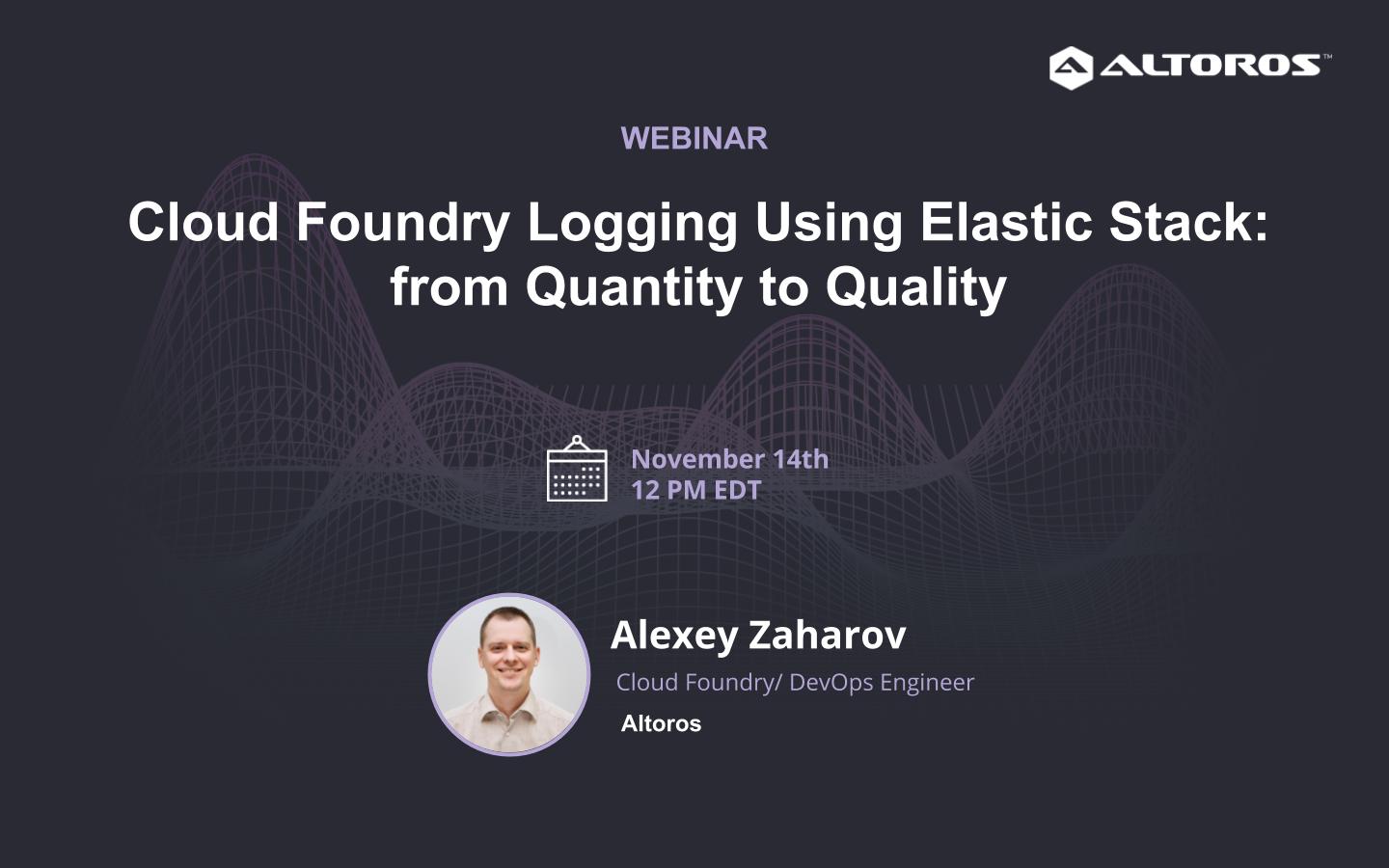.
Overview:
This is the second part in a series of Cloud Foundry monitoring and logging webinars by Altoros. Logging everything generates a lot of data. This webinar covers the fundamentals, tips, and tricks of using a centralized, highly available logging solution to retrieve valuable data from logs across different use cases.
We’ll start with an overview of what you need to know about some of the most widely used log search and analytics tools: Elasticsearch, Logstash, and their Cloud Foundry-specific extension. We’ll also see what Cloud Foundry logs shall be collected in the first place. Then we will push a sample app to the Cloud Foundry platform and discover how to view its basic logs. Finally, we’ll extract (parse) custom logs using a Logstash grok filter.
What you will learn:
Who should join this webinar:
This webinar will be of interest to developers and operators who want to learn how to use the Elastic Stack (and Logsearch, its extension for working with Cloud Foundry logs) to efficiently manage and analyze logs.
About the presenter:

Alexey Zaharov is a Cloud Foundry/DevOps Engineer at Altoros. His main focus areas are cloud automation, virtualization, and training DevOps engineers in all things cloud. As a part of Altoros’s Cloud Foundry team, Alexey has built multiple CF environments. He is also a contributor to and big fan of Logsearch, a solution that can aggregate all CF logs together.
